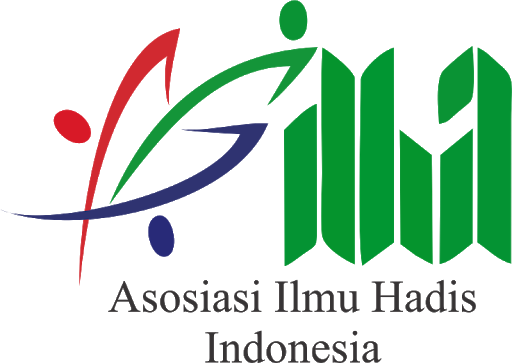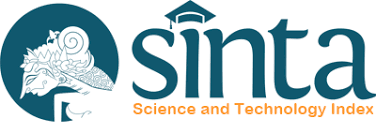Book of Hadith Index and its Significance in Hadith Research
DOI:
https://doi.org/10.14421/livinghadis.2022.3758Keywords:
Qualitative reasearch, Codification, Book of Index Hadith, hadith research, Takhrîj al-HadîtsAbstract
This study discusses the development of the hadith index book as a product of hadith codification, from the method and systematic aspect of its preparation. The research is qualitative by using literature study method. The data reasearch has been collected from library documents, primary and secondary data. This study is expected to discover the development of the hadith index book, including the methods and systematics used by the scholars in its compiling. The study finds that the existence of the hadith index book is a response from the scholars to the development of hadith codification. Its existence makes the easiness for hadith reviewers to trace the Prophet's hadith referring to its primary source. In addition, hadith index books have a very close significance to hadith research, especially in the context of takhrîj al-ḥadîs.
 Abstract viewed: 455 times
|
Abstract viewed: 455 times
|
 pdf downloaded = 793 times
pdf downloaded = 793 times
References
Aʻẓamī, M. M. (2001). Studies in Early Hadith Literature: With a Critical Edition of Some Early Texts. Suhail Academy.
Ali, M. (2017). Teori Klasifikasi Kitab Hadis. Tahdis: Jurnal Kajian Ilmu Al-Hadis, 8(2). https://doi.org/10.24252/tahdis.v8i2.7226
Al-Khatib, M. A. (1989). Ushul al Hadis: Ulumuh wa Mushthalahuh/ Muhammad Ajjaj al Khatib. Dar Al-Fikr.
Al-Khuli>, M. ‘Abd al-‘Azi>z. (1407). Ta>rikh funu>n al-H}adi>s} al-Nabawi. Beirut: Da>r Ibn Kas}i>r.
Al-Mar’asyaly, Y. A. (1986). ’Imu Fahrasat al-H}adi>s}; Nasyatuhu, Tat}awwaruhu, Asyharu Ma> Duwwina Fi>hi. Riyad: Dar al-Ma’rifah.
Al-Mizzi, J. al-D. A. al-H. Y. bin ‘Abd al-Rahma>n. (1999). Tuhfat al-Asyra>f bi Ma’rifati al-At}ra>f>. Beirut: Da>r al-Garb al-Isla>mi.
Al-S}alih}, S. (1973). ’Ulu>m al-H}adi>s} wa Mus}at}ala>h}uhu. Libanon: Dar al-`Ilm lil-Malayin.
Al-Tahhan, M. (1995). Taisi>r Mus}t}alah} al-H}adi>s}. Riyad: Maktabah al-Ma’arif li -Al-Nasyr wa al-Tauzi>’.
Aniqoh, A. (2017). Tipolofi Kodifikasi Hadis Dalam Kitab Tuhfat al-Asyra>f bi Ma’rifati al-At}ra>f. Universum: Jurnal KeIslaman Dan Kebudayaan, 11(1). https://doi.org/10.30762/universum.v11i1.592
At-Tahha>n, M. (1995). Metode Takhrij dan Penelitian Sanad Hadis, terj. Ridlwan Nasir. Surabaya: Bina Ilmu.
Bahasa, B. P. dan P. (2019). Arti kata indeks—Kamus Besar Bahasa Indonesia (KBBI) Online. Retrieved 9 June 2022, from KBBI Daring website: https://www.kbbi.web.id/indeks
Fatimah, F. (2020). Hadis dari Masa ke Masa (Kodifikasi Era Mutaqaddimin). Islam sTransformatif : Journal of Islamic Studies, 4(1), 57–67. https://doi.org/10.30983/it.v4i1.2627
Hanafi, H. (2019). Perkembangan Kajian Hadis Ulama Banjar: Analisis Genealogi Intelektual dan Pengaruhnya Terhadap Corak Kajian Hadis. Journal of Qur’an and Hadith Studies, 5(1), 51–78. https://doi.org/10.15408/quhas.v5i1.13419
Irham, M. (2015). Sistematika Kodifikasi Hadis Nabi Dari Tinjauan Sejarah. ADDIN, 7(2). https://doi.org/10.21043/addin.v7i2.579
Ismail, M. S. (1991a). Cara Praktis Mencari Hadis. Bulan Bintang.
Ismail, M. S. (1991b). Metodologi Penelitian Hadis Nabi. Jakarta: Bulan Bintang.
Isnaeni, A. (2014). Historisitas Hadis Dalam Kacamata M. Mustafa Azami. Epistemé: Jurnal Pengembangan Ilmu Keislaman, 9(2), 233–248. https://doi.org/10.21274/epis.2014.9.2.233-248
Itr, N. (2012). Ulumul Hadis (I). Bandung: Remaja Rosdakarya.
Jamaluddin, S. (2004). Tadwin Al-Hadits: Kontroversi Sekitar Autentisitas Hadis Larangan Penulisan Hadis. Tarjih: Jurnal Tarjih dan Pengembangan Pemikiran Islam, 7(1), 117–134. Retrieved from https://jurnal.tarjih.or.id/index.php/tarjih/article/view/64
Khudhori, M. (2016). Tipologi Kitab Al-Ma’a>jim Dalam Kodifikasi Hadis. 2(2). https://doi.org/10.21043/riwayah.v2i2.3138
Saifuddin, & Fauzi Aseri, Akh. (2011). Arus Tradisi Tadwin Hadis dan Historiografi Islam: Kajian Lintas Aliran. Yogyakarta: Pustaka Pelajar.
Salim, A. (2019). Studi Analisis Kodifikasi Hadis. Hikmah, 16(2), 14–19. Retrieved from http://e-jurnal.staisumatera-medan.ac.id/index.php/hikmah/article/view/42
Shaukat, J. (1985). Classification of Ḥadith Literature. Islamic Studies, 24(3), 357–375.
Shiddieqy, T. M. H. A. (1998). Sejarah dan Pengantar Ilmu Hadits. Pustaka Rizki Putra.
Suryadi, & Suryadilaga, M. A. (2009). Metodologi Penelitian Hadis. TH Press.
Suryadilaga, M. A. (2012). Metodologi Syarah Hadis.
Ulum, B. (2020). Menelisik Kodifikasi Hadis: Upaya Menakar Validitas Hadis Sebagai Sumber Kedua di Tengah Kepungan Kelompok Inkar al-Sunnah. Maqashid, 3(2), 1–15. https://doi.org/10.35897/maqashid.v3i2.422
Wensinck, A. J. (1936). Al-Mu’jam Mufahras li Alfa>z} al-H}adi>s} al-Nabawi. Leiden: E.J. Brill.
Yunitasari, R. (2020). Masa Kodifikasi Hadis: Meneropong Perkembangan Ilmu Hadis Pada Masa Pra-Kodifikasi hingga Pasca Kodifikasi. Jurnal Ilmiah Ar-Risalah: Media Ke-Islaman, Pendidikan Dan Hukum Islam, 18(1), 101–113. Retrieved from http://ejournal.iaiibrahimy.ac.id/index.php/arrisalah/article/view/980
Zaenuri, Z., & Munawaroh, R. Z. (2021). Historis Periodesasi Perkembangan Hadis dari Masa ke Masa (Rasulullah, Sahabat, Tabi’in). At-Tafkir, 14(2), 168–177. https://doi.org/10.32505/at.v14i2.3431
Downloads
Published
Versions
- 2022-07-06 (2)
- 2022-07-06 (1)
Issue
Section
License
Copyright (c) 2022 LATHIF RIFA'I

This work is licensed under a Creative Commons Attribution-ShareAlike 4.0 International License.
- Authors who publish with this journal agree to the following terms:
- Authors retain copyright and grant the journal right of first publication with the work simultaneously licensed under a Creative Commons Attribution License that allows others to share the work with an acknowledgement of the work's authorship and initial publication in this journal.
- Authors are able to enter into separate, additional contractual arrangements for the non-exclusive distribution of the journal's published version of the work (e.g., post it to an institutional repository or publish it in a book), with an acknowledgement of its initial publication in this journal.
- Authors are permitted and encouraged to post their work online (e.g., in institutional repositories or on their website) prior to and during the submission process, as it can lead to productive exchanges, as well as earlier and greater citation of published work.
















